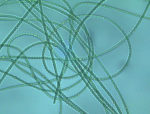Advertise Follow Us
No-Till Farmer News
Reducing Input Costs with Cover Crops: Part 1
In part 1 of this 2-part series on the economics of cover crops, GO SEED explores how they can help reduce input costs
Read More
[Podcast] Comparing Three U.S. Carbon Market Programs
For this No-Till Farmer podcast, we caught up with representatives from three companies who were talking with farmers about their carbon programs at the 2021 Farm Progress Show.
Read More
Sponsored Content: Planter Maintenance with Precision Planting







